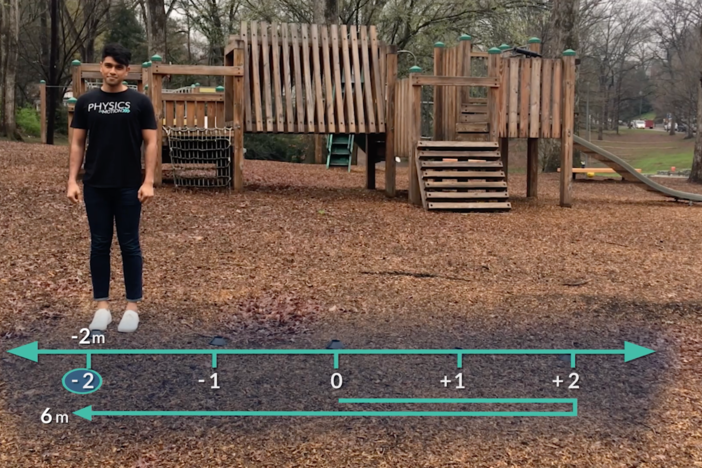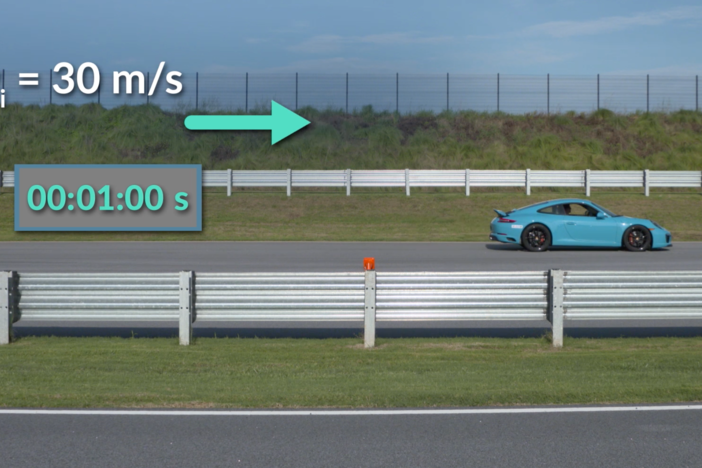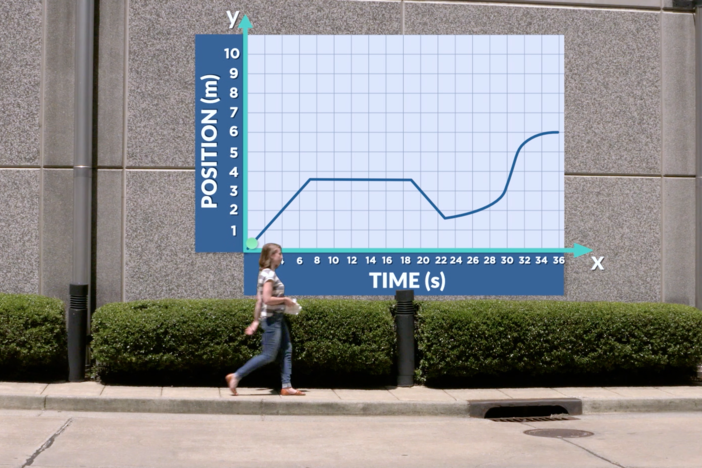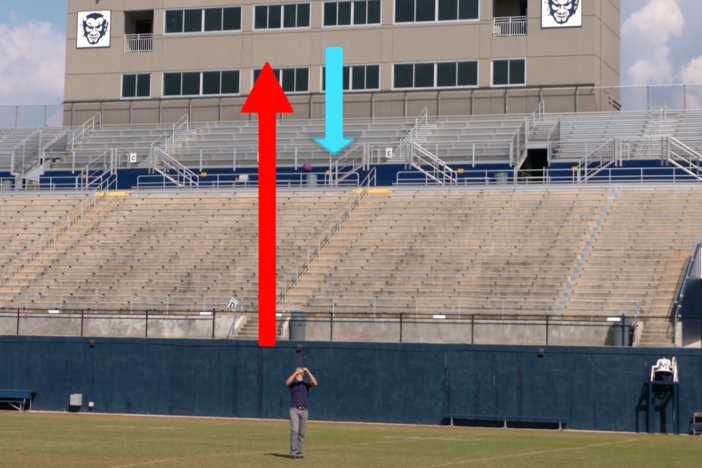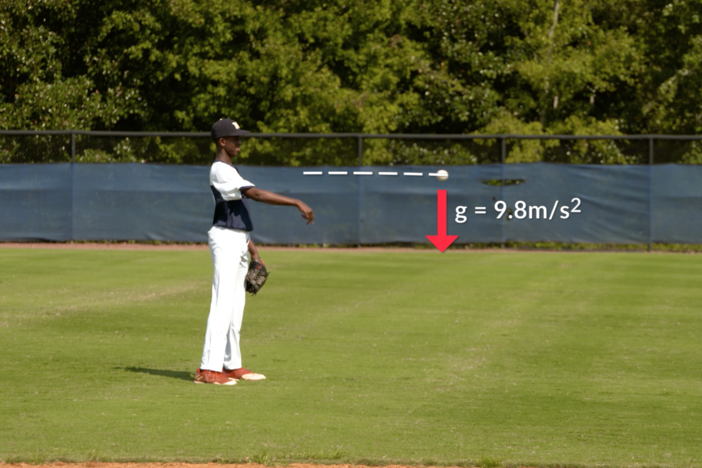Segment E: Free Fall
We head to a football stadium to explain free fall as we work through an example problem finding the maximum height of a thrown object.
Segment E: Free Fall
We head to a football stadium to explain free fall as we work through an example problem finding the maximum height of a thrown object.
Science
Obtain, evaluate, and communicate information about the relationship between distance, displacement, speed, velocity, and acceleration as functions of time.
Plan and carry out an investigation of one-dimensional motion to calculate average and instantaneous speed and velocity.
- Analyze one-dimensional problems involving changes of direction, using algebraic signs to represent vector direction.
- Apply one-dimensional kinematic equations to situations with no acceleration, and positive, or negative constant acceleration.
Obtain, evaluate, and communicate information to explain the relationships among force, mass, and motion.
Plan and carry out an investigation to analyze the motion of an object using mathematical and graphical models.
Analyze and interpret data to identify the relationship between mass and gravitational force for falling objects.
-Define free fall.
-Understand that the acceleration due to gravity on earth is 9.8 m/s2and an object in free fall is constantly experiencing this acceleration.
-Using kinematic equations, be able to calculate the initial velocity, final velocity, displacement, or time elapsed of an object in free fall.
free fall - an object in motion only under the influence of the force of gravity.
The Physics in Motion teacher toolkit provides instructions and answer keys for study questions, practice problems, labs for all seven units of study. GPB offers the teacher toolkit at no cost to Georgia educators.To order your teacher toolkit, complete and submit this form to request the teacher toolkit. You only need to submit this form one time to get materials for all seven units.
